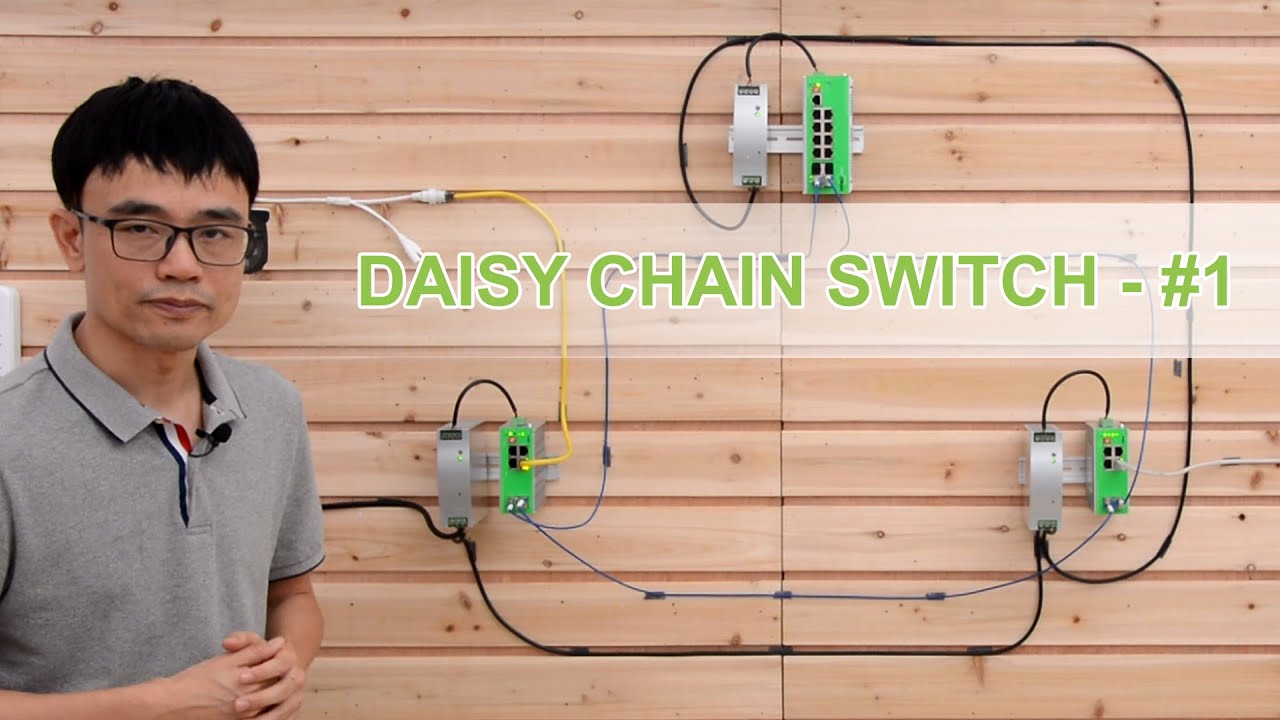Chained together switches, an innovative approach in electrical circuits, empower users with enhanced control and flexibility. By connecting multiple switches in a sequence, this technique opens up a world of possibilities for optimizing electrical systems in various applications.
This comprehensive guide delves into the intricacies of chained together switches, exploring their wiring, configuration, advantages, and applications. We’ll also provide troubleshooting tips and maintenance guidelines to ensure the reliability of these versatile electrical components.
Introduction

A ‘chained together switch’ in the context of electrical circuits refers to a configuration where multiple switches are connected in series, allowing for the control of a single circuit or device from multiple locations.
This setup enables convenient and flexible control, as the circuit or device can be turned on or off from any of the connected switches.
Common Applications
Chained together switches are commonly used in various residential and commercial applications, including:
- Controlling lighting systems in large rooms or buildings, allowing for convenient switching from multiple points.
- Providing control of fans or other appliances from different locations within a room or area.
- Creating a “master switch” setup, where one switch can control multiple circuits or devices, simplifying overall control.
Wiring and Configuration
Chaining together switches involves connecting multiple switches to extend the number of available ports and create a larger network. This process requires careful wiring and configuration to ensure proper communication and data flow.
The wiring for chained switches typically involves connecting the uplink port of one switch to a regular port on another switch. Uplink ports are designed specifically for inter-switch connections and provide higher bandwidth and reliability. The choice of cables for the connection depends on the specific switches being used and the desired speed and distance requirements.
Configuration
Once the switches are physically connected, they need to be configured to work together as a single network. This involves setting the IP addresses, subnet masks, and default gateways on each switch. Additionally, the switches may need to be configured with VLANs (Virtual LANs) to segment the network into different logical groups.
The configuration of chained switches can be done through a web interface, command-line interface (CLI), or a dedicated management console. The specific steps for configuration vary depending on the switch model and manufacturer.
Types of Switches
Various types of switches can be chained together, including:
- Unmanaged switches: These switches have a fixed configuration and do not offer advanced features.
- Managed switches: These switches provide more flexibility and allow for customization of settings, including VLANs, QoS (Quality of Service), and port security.
- PoE (Power over Ethernet) switches: These switches can provide power to connected devices over Ethernet cables, eliminating the need for separate power outlets.
Advantages and Disadvantages
Chaining together switches offers several advantages, including:
- Extending the number of available ports: Switches can be chained together to create a larger network with more ports for connecting devices.
- Increased flexibility: Chained switches provide more flexibility in network design and allow for the creation of custom network topologies.
- Improved performance: Chaining switches can help improve network performance by reducing bottlenecks and providing faster data transfer speeds.
However, there are also some disadvantages to consider:
- Increased complexity: Chaining switches can increase the complexity of the network, making it more difficult to manage and troubleshoot.
- Potential for configuration errors: Incorrect switch configuration can lead to network problems, such as connectivity issues or security breaches.
- Cost: Chaining switches can be more expensive than using a single large switch, especially when managed switches are involved.
Applications and Benefits: Chained Together Switch

Chained together switches offer significant advantages in various applications where electrical systems require enhanced control, flexibility, and functionality.
One notable application is in industrial settings, where multiple machines and processes require independent control. By connecting switches in a chain, operators can remotely monitor and manage each machine’s power supply, allowing for efficient and centralized control. This setup also facilitates troubleshooting and maintenance, as faults can be quickly isolated and addressed.
Increased Control and Flexibility
Chained together switches provide increased control over electrical systems by enabling remote switching and monitoring. This allows for quick and precise adjustments to power distribution, enhancing the efficiency and responsiveness of the system. Additionally, the ability to chain multiple switches together allows for greater flexibility in system design, as the number of switches can be easily adjusted to meet specific requirements.
Enhanced Functionality, Chained together switch
By chaining together switches, the functionality of electrical systems can be significantly enhanced. For instance, in home automation systems, multiple switches can be connected to control lighting, appliances, and other devices. This allows for centralized control and automation, enabling users to remotely manage their home’s electrical systems for convenience and energy efficiency.
4. Design Considerations

When designing a system with chained together switches, it is important to consider the following factors:
Load calculation
The total load on the system must be calculated to ensure that the switches can handle the current draw. The load calculation should include all of the devices that will be connected to the switches, as well as the length and type of wire that will be used.
Wire sizing
The wire size must be selected based on the load calculation. The wire size should be large enough to handle the current draw without overheating.
Safety precautions
When working with chained together switches, it is important to take the following safety precautions:
Always turn off the power before working on the switches.
Use caution when handling the wires, as they can be sharp.
Do not overload the switches.
Do not use the switches in a wet or humid environment.
Troubleshooting and Maintenance
Chained together switches, while offering increased flexibility and scalability, can introduce additional complexities and potential points of failure. Understanding the common problems and implementing effective troubleshooting and maintenance practices is crucial for ensuring the reliability and performance of the network.
Common Problems
- Loop Formation:Improper cabling or misconfiguration can create loops in the network, causing excessive traffic, broadcast storms, and network instability.
- Link Failures:Physical damage to cables, faulty connectors, or power outages can disrupt communication between switches.
- STP Issues:Spanning Tree Protocol (STP) is responsible for loop prevention. Incorrect STP configurations or STP convergence issues can lead to network outages.
- Overloaded Switches:Excessive traffic or high port utilization can overwhelm switches, resulting in performance degradation or packet loss.
- Software Bugs:Firmware issues or software defects can introduce unexpected behavior or instability in the switches.
Troubleshooting Tips
- Physical Inspection:Verify cable connections, check for damaged cables or connectors, and ensure power is supplied to all switches.
- Loop Detection:Use loopback plugs or software tools to identify and remove loops from the network.
- STP Configuration:Review STP settings, ensure they are consistent across all switches, and troubleshoot any convergence issues.
- Traffic Monitoring:Monitor switch utilization and identify potential bottlenecks or overloaded ports.
- Firmware Updates:Regularly check for and apply firmware updates to address software bugs and improve performance.
Importance of Regular Maintenance
Regular maintenance is essential to maintain the health and reliability of chained together switches. Preventive measures include:
- Firmware Updates:Install security patches and firmware updates to address vulnerabilities and improve performance.
- Cleaning:Remove dust and debris from switches and cables to prevent overheating and performance issues.
- Cable Management:Organize and label cables to facilitate troubleshooting and reduce the risk of accidental disconnections.
- Regular Testing:Periodically test switch functionality, including link connectivity, STP operation, and traffic forwarding.
- Documentation:Maintain accurate documentation of switch configurations, cabling, and maintenance activities for future reference.
Last Point
In conclusion, chained together switches offer a powerful solution for enhancing the functionality and control of electrical systems. By understanding the principles, applications, and best practices Artikeld in this guide, you can harness the full potential of this innovative technique.
Essential Questionnaire
What are the advantages of using chained together switches?
Chained together switches provide increased control, flexibility, and energy efficiency by allowing multiple switches to operate a single light or device.
What types of switches can be chained together?
Various types of switches, including single-pole single-throw (SPST), single-pole double-throw (SPDT), and three-way switches, can be chained together depending on the desired functionality.
How do I troubleshoot a chained together switch system?
Troubleshooting involves checking for loose connections, faulty switches, and proper wiring. Use a multimeter to test for continuity and voltage to identify the source of the problem.

